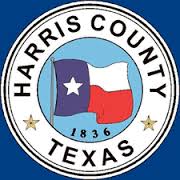Coming soon to tell you if you are now in the floodplain.
When Harris County debuts a massive overhaul of its floodplain maps later this year, the Houston area will be the first in the country to rely on a more accurate assessment of homes and businesses at risk. The update is a direct response to Hurricane Harvey, a storm so ferocious it forced the region to change its understanding of how much rainfall to plan for and which neighborhoods could flood.
Harvey — the third 500-year storm in three years — overwhelmed Harris County with up to 47 inches of rain, exposing serious flaws in communicating flood risk. A county analysis found half of the 204,000 homes and apartments that flooded were outside the boundaries of the official flood risk zones mapped by the Federal Emergency Management Agency.
More than half of the damaged homes in the Tax Day storm in 2016 were outside the mapped floodplains, as were more than one-third of those during the Memorial Day flood in 2015.
On the new maps, most of Harris County’s floodplains will expand, reflecting a major effort to capture a more comprehensive understanding of flood risk.
FEMA’s existing floodplain maps show communities their risk of fluvial, or river flooding, when a bayou, creek or lake overflows its banks and floods nearby structures. What they do not show is the risk of urban flooding, when intense rainfall overwhelms stormwater systems regardless of proximity to a bayou or other channel.
The new floodplain maps for Harris County — originally set to be released in late 2022, but now expected in late this summer at the earliest — will be FEMA’s first maps to depict urban flooding. They also will reflect updated rainfall estimates from the National Oceanic and Atmospheric Administration that better reflect the reality that storms have intensified in recent decades, data that had not been updated since the 1960s.
“This update is really a transformational way of thinking about floodplains,” said Tina Petersen, executive director at the Harris County Flood Control District. “This is the first program that FEMA has done with a partner like Harris County Flood Control District that’s really looking at innovative mapping tools trying to develop what is a much more comprehensive understanding of flood risk, beyond what has been done in the past.”
Communities across the United States are going through the process of updating their floodplain maps to align with NOAA’s higher rainfall estimates.
Harris County’s effort to map urban flood risk is its own innovation in response to Harvey, which demonstrated the limitations of the existing models, said Ataul Hannan, planning division director at the Harris County Flood Control District.
“That is a new approach,” Hannan said. “They have never done it anywhere in the United States.”
There’s a lot more to the story so go read the rest, or read the companion story that summarizes the main points. Lots of things change – the amount of rainfall needed to be called a 100-year or 500-year flood, changes to individual watersheds, future updates to include new flood mitigation projects – with a big one being that inclusion of urban flooding risk. Some number of people who are not now in a defined floodplain will be in the new maps, and some of them will not be happy about it. There will be a lot of discussion to be had afterwards.
On a related note.
Harris County Commissioners Court is expected next week to consider a plan for spending $750 million in flood mitigation funds, all or part of which could be earmarked for closing a funding gap in the county’s flood bond program.
A year after a calamitous 2017 storm inundated more than 200,000 homes and businesses, voters approved a $2.5 billion bond proposal to tackle more than 180 flood control projects across the county.
County officials expected to receive additional billions of dollars from state and federal governments to undertake those projects, but the money failed to materialize. The county two years ago said that had resulted in a $1.4 billion shortfall in the flood bond program.
The Harris County Flood Control District said it has been able to keep the flood bond projects on schedule thanks to the Flood Resilience Trust the county created in June 2021 to address the funding gap. The county budget office estimated that if no other federal or state aid comes through, the trust would be able to make up bond project shortfalls until about 2026.
The trust is funded by Harris County Toll Road Authority revenues.
Now, county officials could spend part of the $750 million allotment to close what remains of that funding gap.
That’s from last week, I was waiting to see what the post-approval story looked like but then decided to add this in to this post. You know the background here, if I start thinking about it too much my head will explode, so I’ll just leave this here. The county is allowed to do this as long as the projects in question are HUD-compliant since this is HUD money, and there seems to be unanimous support for it.

